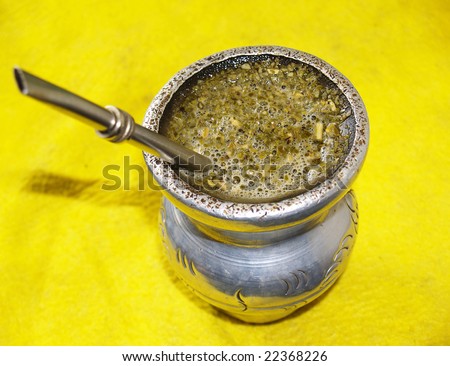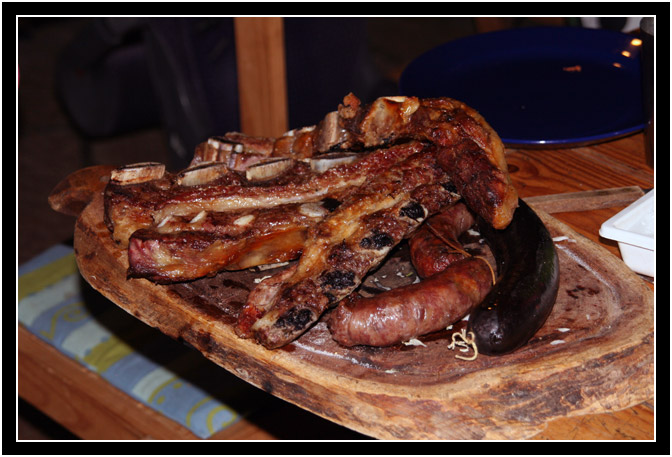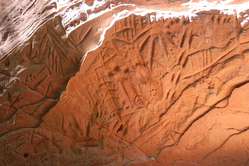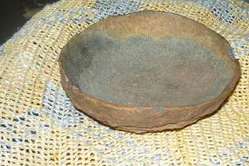BAÑADO SUR, Paraguay, 21 October 2010 – The Cateura Dump, in the Bañado Sur area along the Paraguay River, is the final dumping site for more than 1,500 tons of solid waste each day. Poor waste management has caused the country’s most essential water supply to become dangerously polluted and the environment contaminated. Seven neighbourhoods housing some 2,500 families surround the dump. Most of these families earn a living by separating garbage for the recycling industry. Children are often the ones with the onerous and unsanitary chore of collecting and peddling the waste. Poverty drives children into early labor. Lack of literacy and adequate education compounds the problem. The UNICEF-supported Abrazo Programme was initiated by the Paraguay National Department for Children and Adolescent Affairs in an attempt to reduce child labour and better the lives of children in these communities.
Map of Paraguay

Thursday, March 31, 2011
Womens rights
The 1992 Constitution of Paraguay upholds the principle of equality for all individuals and prohibits discrimination, and the government claims to have removed most of the discriminatory clauses in the country’s existing legislation. Feminist organisations conducted significant awareness-raising campaigns during the 1990s, which helped develop a legal and institutional framework to guarantee the protection of women’s rights.
Family Code:
Overall, Paraguay’s Family Code provides a reasonable degree of protection for women. However, the incidence of early marriage remains quite high. The legal age for marriage is 16 years for both men and women, and a 2004 United Nations report estimated that 17 per cent of girls between 15 and 19 years of age were married, divorced or widowed.
Polygamy is prohibited by law in Paraguay.
According to Paraguay’s new Civil Code, men and women have the same rights and responsibilities within the home, particularly in relation to parental authority.
Men and women in Paraguay have equal legal rights to inheritance.
Polygamy is prohibited by law in Paraguay.
According to Paraguay’s new Civil Code, men and women have the same rights and responsibilities within the home, particularly in relation to parental authority.
Men and women in Paraguay have equal legal rights to inheritance.
Physical Integrity:
Laws to protect the physical integrity of women in Paraguay are weak. Violence against women is the main infringement of women’s rights in the country. A law passed in 2000 classifies domestic violence as a crime, but only when it is physical violence; the law does not specifically recognise psychological and economic abuse. Moreover, violence must be habitual before legal proceedings can be initiated against the offender.
There is no evidence to indicate that female genital mutilation is practised in Paraguay, nor does it appear to be a country of concern in relation to missing women.
There is no evidence to indicate that female genital mutilation is practised in Paraguay, nor does it appear to be a country of concern in relation to missing women.
Monday, March 21, 2011
Art of Paraguay
Traditional folk arts include ñanduti (a spider web-like lace), ao poí (embroidered cloth), several kinds of ceramic and clay work, and silver filigree jewelry. Paintings by contemporary artists are displayed in a number of galleries in Asunción.
Foods at Ceremonial Occasions
Special family celebrations and social gatherings call for an asado, or barbecue, with beef roasted over open fires and accompanied by boiled mandioca and sopa paraguaya. Chipa traditionally is prepared for the major religious holidays of Christmas and Holy Week. Special meals during these holidays also may include an asado of beef or a pit-roasted pig. A popular social pastime is the drinking of maté, a tea made from the leaves of a plant related to holly. It is an important ritual, shared among family, friends, and colleagues. Each time, one person is responsible for filling a gourd almost to the top with the tea. Water is heated, but not boiled, in a kettle and poured into the vessel. Each person then sips the liquid through a silver tube.
Thursday, March 10, 2011
Remains of first human settlements on indigenous land
Spear heads and carved stone knives, bones of animals which were hunted and eaten and a hearth dating from about 5,200 years have been found on an archaelogical excavation; these finds are the oldest evidence of human presence ever discovered in Paraguay.This scientific investigation was organised and supervised by the Guarani Paî Tavyterâ indigenous association, Paî Reta Joaju, in their sacred territory and carried out by a Spanish team from the Altamira Museum.
http://www.survivalinternational.org/news/4291
| Cave markings found at the dig site. © Paî Tavyterá/Museo de Altamira |
http://www.survivalinternational.org/news/4291
Ayore and deforestation
Of the several different sub-groups of Ayoreo, the most isolated are the Totobiegosode (‘people from the place of the wild pigs’). Since 1969 many have been forced out of the forest, but some still avoid all contact with outsiders. Their first sustained contact with white people came in the 1940s and 1950s, when Mennonite farmers established colonies on their land. The Ayoreo resisted this invasion, and there were killings on both sides. In 1979 and 1986 the American fundamentalist New Tribes Mission helped organise ‘manhunts’ in which large groups of Totobiegosode were forcibly brought out of the forest.
Several Ayoreo died in these encounters, and others succumbed later to disease. Other Totobiegosode groups came out of the forest in 1998 and 2004 as continual invasions of their land meant they constantly had to abandon their homes, making life very hard.
Recently a man belonging to the only uncontacted tribe,still living a nomaci life in the forest, was spotted in South America outside the Amazon basin. He had been sighted near a region targeted for deforestation by Brazilian cattle-ranchers. The next day an abandoned camp, a clay dish, and game ready for cooking were found nearby. The man is one of an unknown number of uncontacted Ayoreo-Totobiegosode living in the dry forests of northern Paraguay. The Ayoreo tribe has lost a lot of land due to cattle-ranchers, such as the Brazilian firm Yaguarete Pora S.A. The man was seen in an area owned by Yaguarete. In a letter to the Paraguayan government about the sighting, already-contacted Totobiegosode leaders said, ‘We are very concerned about [our relatives still in the forest]. They’re threatened by the deforestation in that region.’Yaguarete was recently fined $16,000/£10,500 by the Paraguayan authorities for concealing the existence of the Totobiegosode in the area where it was given a licence to work.
© GAT/Survival
Several Ayoreo died in these encounters, and others succumbed later to disease. Other Totobiegosode groups came out of the forest in 1998 and 2004 as continual invasions of their land meant they constantly had to abandon their homes, making life very hard.
Recently a man belonging to the only uncontacted tribe,still living a nomaci life in the forest, was spotted in South America outside the Amazon basin. He had been sighted near a region targeted for deforestation by Brazilian cattle-ranchers. The next day an abandoned camp, a clay dish, and game ready for cooking were found nearby. The man is one of an unknown number of uncontacted Ayoreo-Totobiegosode living in the dry forests of northern Paraguay. The Ayoreo tribe has lost a lot of land due to cattle-ranchers, such as the Brazilian firm Yaguarete Pora S.A. The man was seen in an area owned by Yaguarete. In a letter to the Paraguayan government about the sighting, already-contacted Totobiegosode leaders said, ‘We are very concerned about [our relatives still in the forest]. They’re threatened by the deforestation in that region.’Yaguarete was recently fined $16,000/£10,500 by the Paraguayan authorities for concealing the existence of the Totobiegosode in the area where it was given a licence to work.
© GAT/Survival
| Four Ayoreo-Totobiegosode men make first contact with the outside world in 2004. © GAT / Survival |
Wednesday, March 2, 2011
Autogestion
Even well into the 1970s there was no law that protected the indigenous peoples of Paraguay to the point that it was not against the law to kill Indians. But in the early 1970s indigenous leaders sought to establish a system of "autogestion," in which the indigenous groups themselves would represent their own interests and push their own demands. And in 1981, indigenous groups won major legislative victories when the law of native communities (Law 901) recognized indigenous communities and their right to land. The Paraguayan Indigenous Institute (INDI) was created to implement these new laws but unfortunately the laws were not carried out. In 1992 recognized indigenous communities and their rights, emphasizing indigenous ethnic identity and their rights as peoples, as well as an explicit acceptance of cultural diversity.
Subscribe to:
Posts (Atom)






